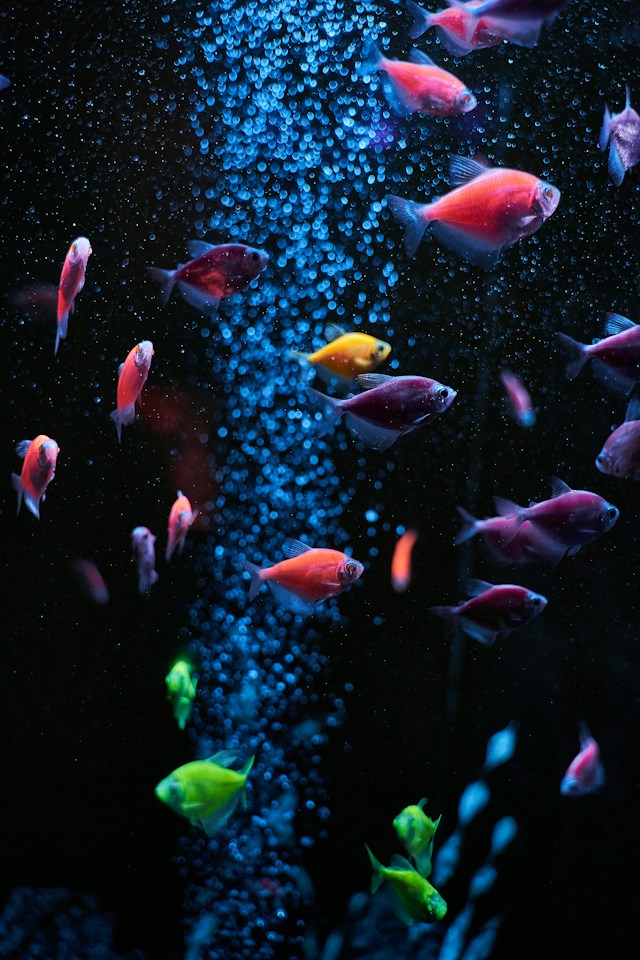How to Set Up a Quarantine Tank for Sick Aquarium Fish?

If you’re fond of maintaining a spectacular collection of aquatic life, then you understand the significance of a healthy ecosystem for your underwater friends. Yet, your lively aquarium inhabitants may occasionally face health problems due to various reasons. In such circumstances, a quarantine tank becomes an essential tool in your aquarium management kit.
A quarantine tank acts as a sanctuary for sick fish, a place where they can heal away from the stress of the main tank’s bustle. It also serves as a preventative measure, helping to prevent the spread of diseases to other fish. But how do you set up a quarantine tank? This comprehensive guide will walk you step-by-step through the process.
Also read : What Are the Steps for Safely Introducing a New Pet Bird to Your Flock?
Selecting the Quarantine Tank
Before rushing off to buy a quarantine tank, you first need to understand the type of tank that’s suitable for your needs. Size, type, and design are all key factors to consider when making your selection.
The size of the quarantine tank depends on the type of fish you keep. A rule of thumb is to have a tank that’s at least one-third the size of your main tank. However, if your aquarium houses larger species, you might need a bigger quarantine tank.
In the same genre : Tips for traveling with your pet
Regarding the type of tank, a simple glass or acrylic aquarium will do the job. Stay away from novelty or designer tanks that have complex shapes and designs. These can cause unnecessary stress for the fish and make maintaining water quality more challenging.
Setting Up the Quarine Tank
After picking the right tank, it’s time to set it up. The setup process involves equipping the tank with essential components, such as a heater, filter, and hiding spots.
The heater is crucial, as it maintains a stable temperature in the quarantine tank. Most tropical fish require a temperature range between 74 and 80 degrees Fahrenheit.
Next is the filter. This component is essential for removing waste products from the water and keeping it clean. You can use a sponge filter or a hang-on-back filter. However, remember to avoid using activated carbon in the filter as it can remove medications from the water.
Then, don’t forget to add a few hiding spots. These can be simple PVC pipes or ceramic pots. Providing hiding spots helps reduce stress on the fish, aiding their recovery.
Acclimating Fish to the Quarantine Tank
Once your quarantine tank is set up and running, it’s now time to introduce your sick fish to their temporary home. It’s crucial to acclimate them slowly to prevent additional stress.
Start by turning down the lights in the quarantine tank. Dimmed lights help create a calming environment for the stressed fish. Next, place the fish, along with the water they came in, into a bag. Float this bag in the quarantine tank for about 15 minutes to equalize the temperature. Then, slowly start adding water from the quarantine tank into the bag. This process should take about an hour.
Monitoring and Treating the Fish
After the fish have been introduced to the quarantine tank, it’s time to move to the treatment phase. This phase involves monitoring the fish and administering the appropriate treatment.
Monitor your fish closely for changes in their behavior or appearance. These changes could provide clues about the kind of illness they’re suffering from.
Once you’ve identified the disease, you can start the treatment process. Depending on the ailment, this might involve adding specific medications to the water, changing the water temperature, or even altering the diet.
Remember to follow the medication instructions carefully. Overdosing can be as harmful as underdosing.
Maintaining the Quarantine Tank
Even after your fish have fully recovered, it’s essential to maintain the quarantine tank. This maintenance ensures that the tank is always ready in case of another disease outbreak.
Maintenance involves regular water changes and checking the equipment. Aim to change at least 30% of the water each week, and clean the filter monthly. Also, check the heater regularly to ensure it’s working correctly.
Setting up a quarantine tank may seem like a daunting task, but it’s a critical measure for maintaining a healthy aquarium. With careful selection, proper setup, and regular maintenance, your quarantine tank can serve as a protective haven for your ailing aquatic companions. And remember, the key to a successful quarantine is patience and attentiveness. Keep a close eye on your fish, and never rush the treatment process.
Post-Treatment Actions in Quarantine Tank
Once your ailing fish have completed their course of treatment and are looking healthier, you may be eager to reintroduce them to the main aquarium. However, there are some crucial steps to follow to ensure a smooth transition.
Firstly, continue to monitor the fish for any recurring symptoms. If they show signs of the same ailment, restart the treatment process. Be sure to consult a vet or an aquarist if the symptoms persist.
Next, gradually reintroduce the recovered fish to the main tank’s conditions. Just as they were acclimated to the quarantine tank, it’s essential to slowly acclimate them back to the main tank’s environment. This process can take several hours or even days, so be patient.
Finally, before transferring the fish, thoroughly clean the main tank. This step is important to prevent any remaining pathogens from infecting the newly-recovered fish. Use an aquarium-safe cleaner and replace a portion of the water.
Once you’re confident that both the fish and the main tank are ready, you can safely return the fish to their original home.
Conclusion: The Importance of a Quarantine Tank
Maintaining a healthy aquarium ecosystem is a task that requires knowledge, patience, and the right tools. One such essential tool is the quarantine tank. This tank serves as a crucial lifeline for sick fish, providing them a safe haven to heal and preventing the spread of disease to other aquarium residents.
Setting up a quarantine tank may initially seem like a cumbersome task. Yet, it is a vital measure that could make the difference between a thriving aquarium and a diseased one. From selecting the right tank to monitoring and treating the fish, every step in the process is critical.
Furthermore, maintaining the quarantine tank post-treatment is equally important. This practice ensures the tank is always ready to house any fish that falls ill in the future.
In conclusion, a quarantine tank is a small investment that pays huge dividends in maintaining the health and vibrancy of your aquarium. It requires careful selection, diligent setup, and meticulous maintenance. But at the end of the day, the well-being of your underwater friends makes it all worthwhile.
